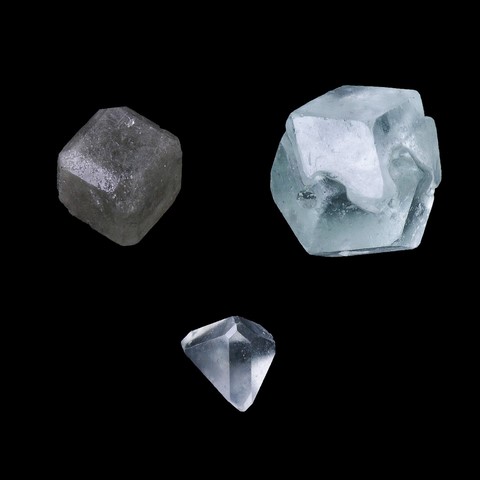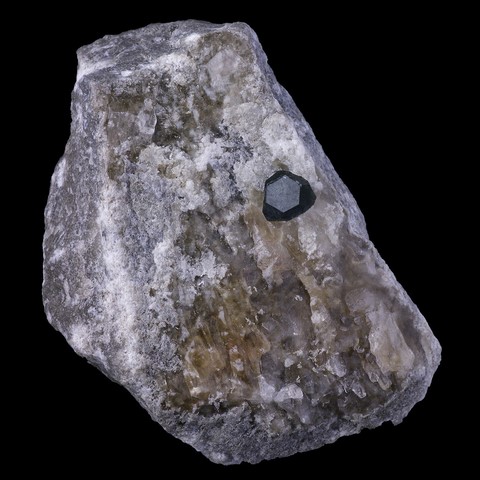BORACITE
Class : Carbonates, nitrates, borates
Subclass : Borates
Crystal system : Orthorhombic
Chemistry : Mg3B7O13Cl
Rarity : Uncommon
Boracite is a mineral that crystallizes in the cubic system above 265°C ; below it becomes orthorhombic while maintaining cubic forms. Magnesium can be partially replaced by iron (ericaite variety) or manganese (chambersite variety). It owes its name to the boron it contains. Boracite is present in beds in ancient evaporite deposits, especially in the German Permian, associated with anhydrite, gypsum, halite (Lüneburg), kainite and carnallite (Stassfurt) and in saliferous diapirs. American (Louisiana and Mississippi). It comes from the light metamorphism of hydrated borates. The crystals are generally millimetric and display cubic forms or derived from the cube : dodecahedron, cubo-octahedron, tetrahedron. Boracite is sometimes massive, saccharoid, resembling a fine-grained white marble, but much harder. It is usually colorless or tending towards gray, yellow or green. Boracite is highly piezoelectric. It is an exceptionally boron ore and has sometimes been cut for jewelery. It is a mineral little known to collectors.
Boracite in the World
Boracite in France
Boracite is not present in the French underground.
Twinning
A boracite twinning on (111) exists but is very rare.
Fakes and scams
No fake inventories for this mineral species. Some crystals could be glued on matrix...
Hardness : 7 to 7.5
Density : 2.91 to 3.1
Fracture : Irregular to conchoidal
Trace : White
TP : Translucent to transparent
RI : 1.658 to 1.673
Birefringence : 0,010 to 0,011
Optical character : Biaxial +
Pleochroism : Very weak
Fluorescence : None
Solubility : Water, hydrochloric acid
Magnetism : None
Radioactivity : None


